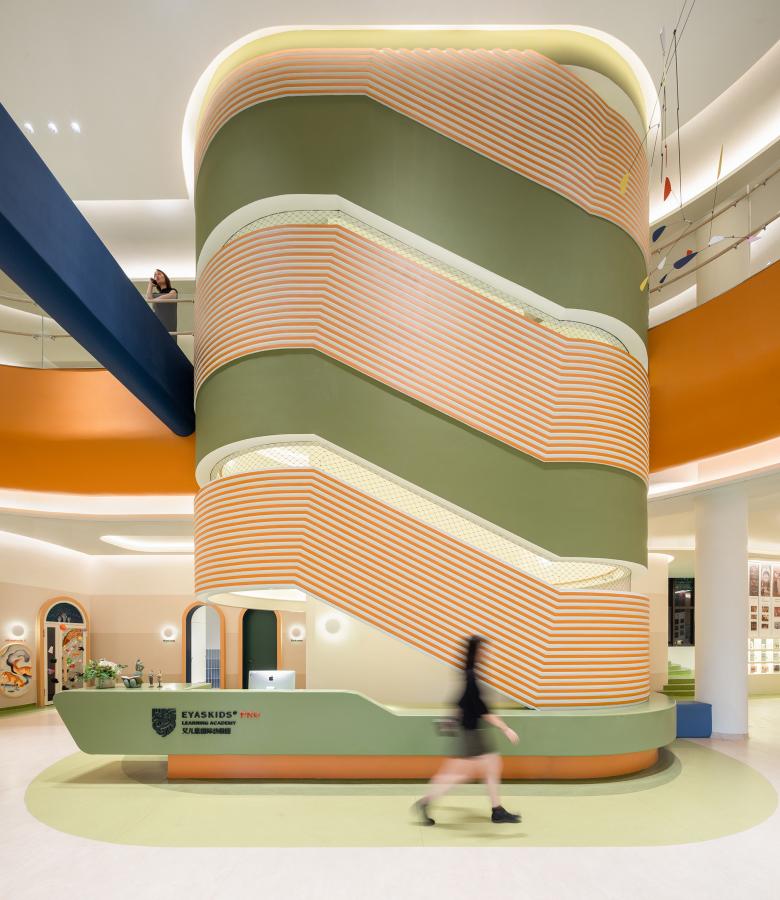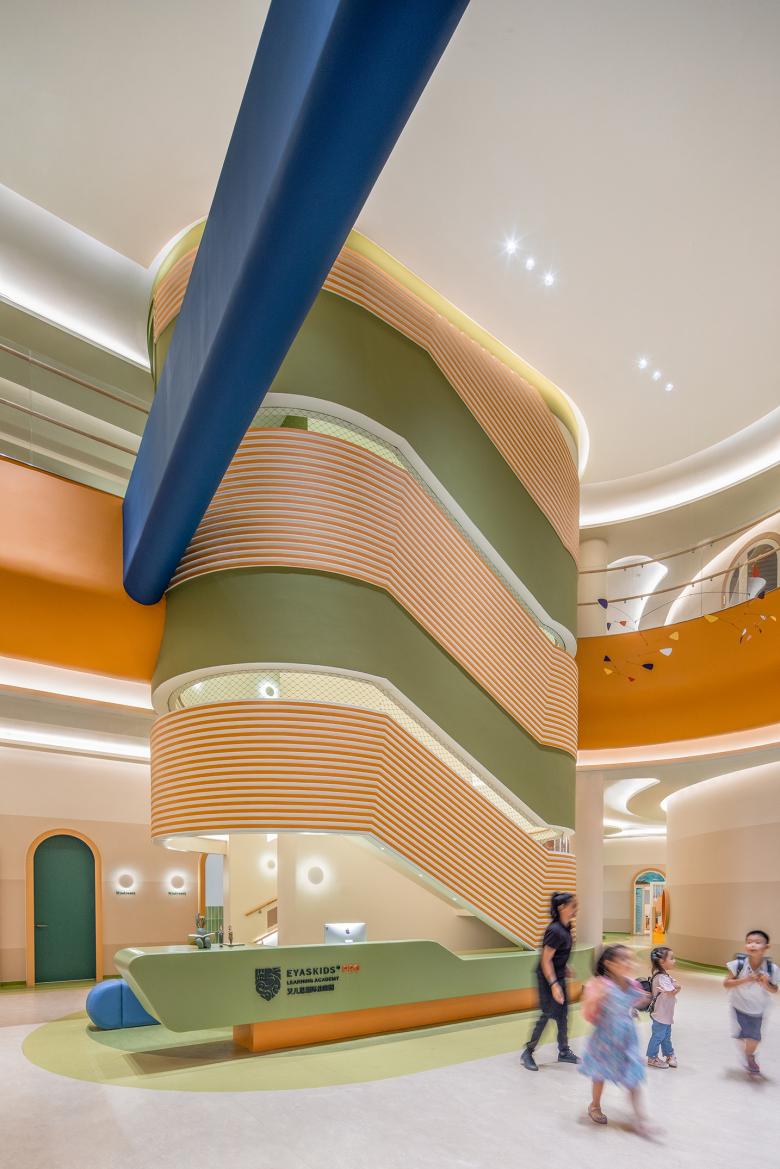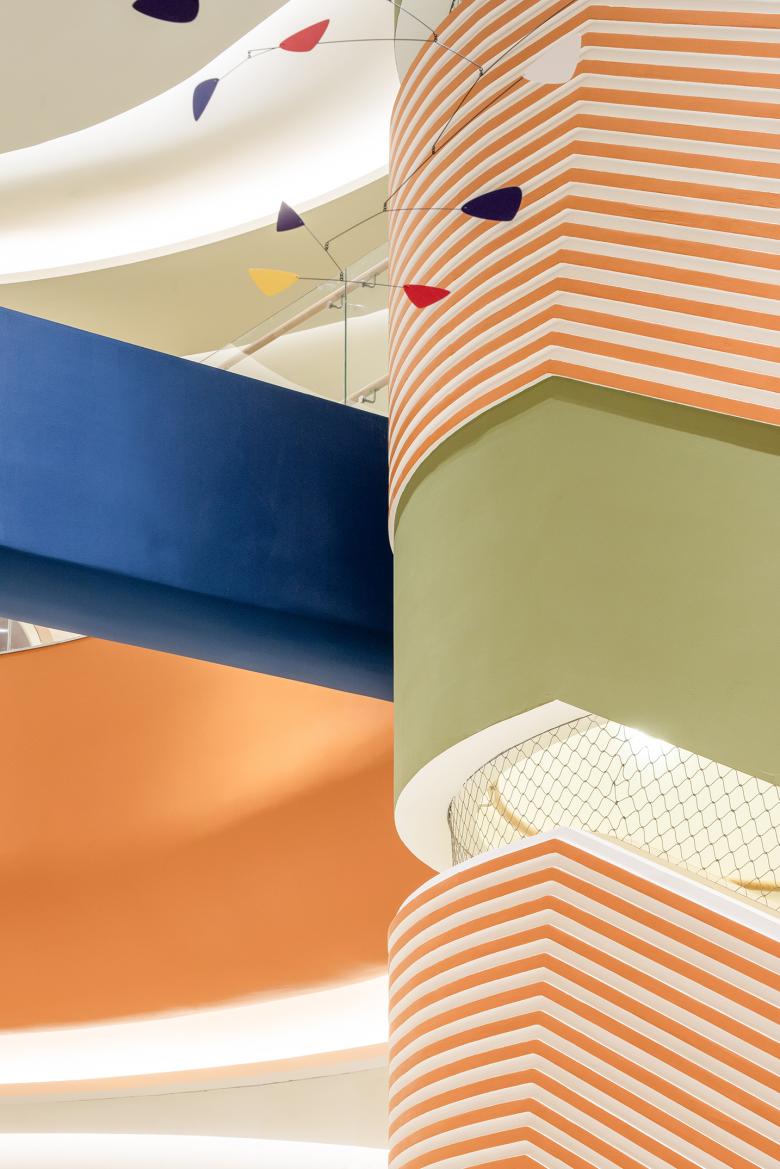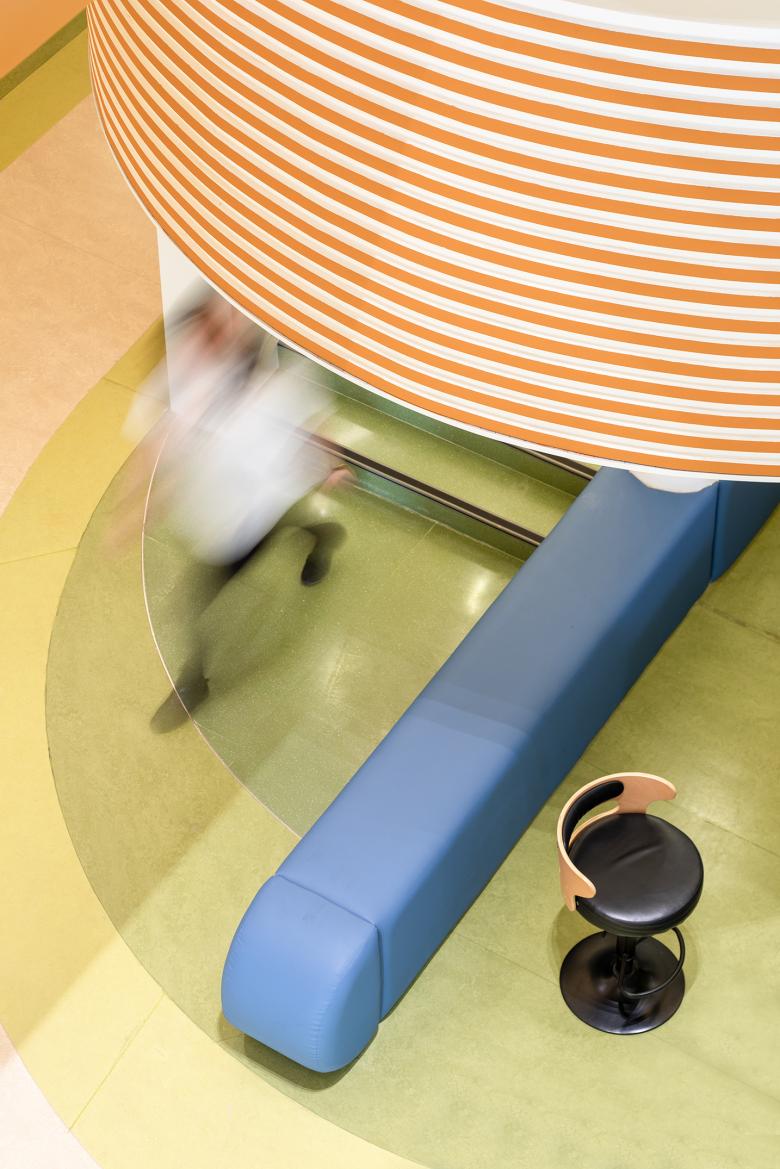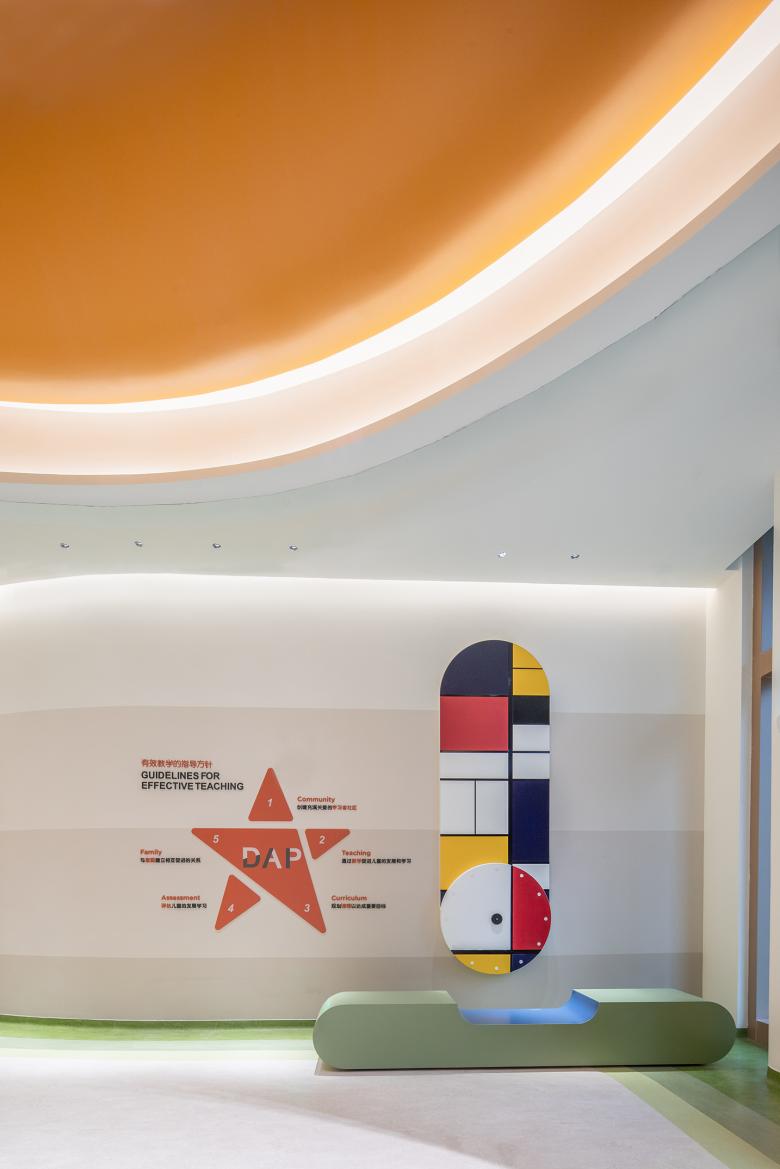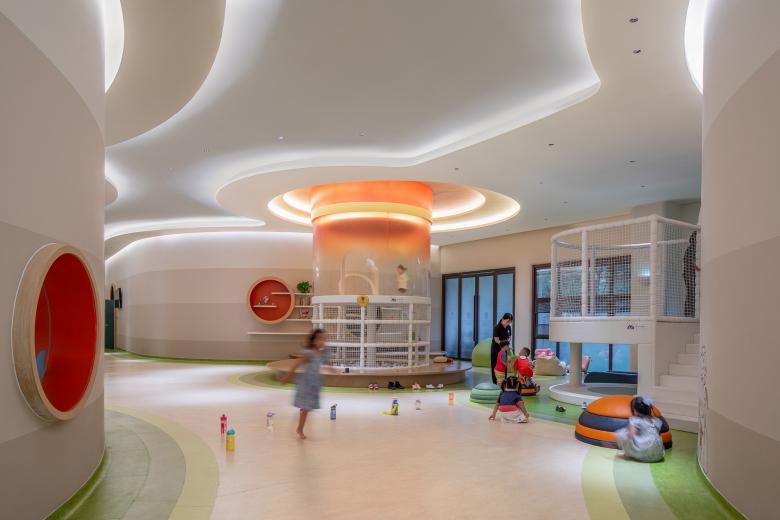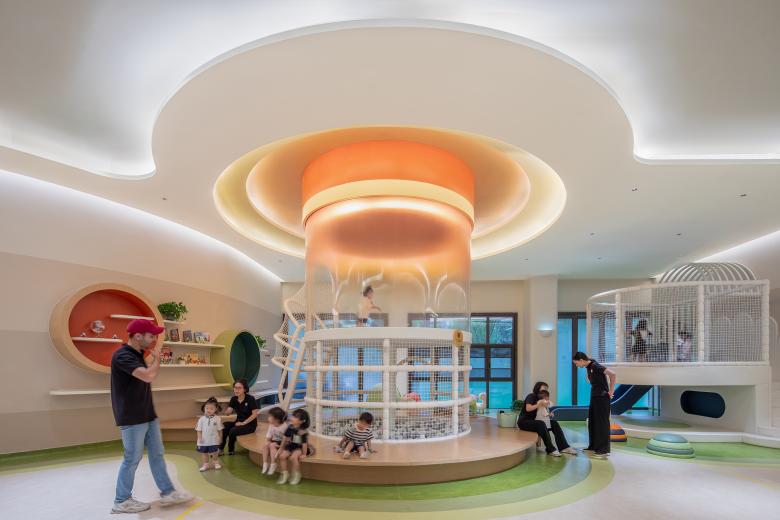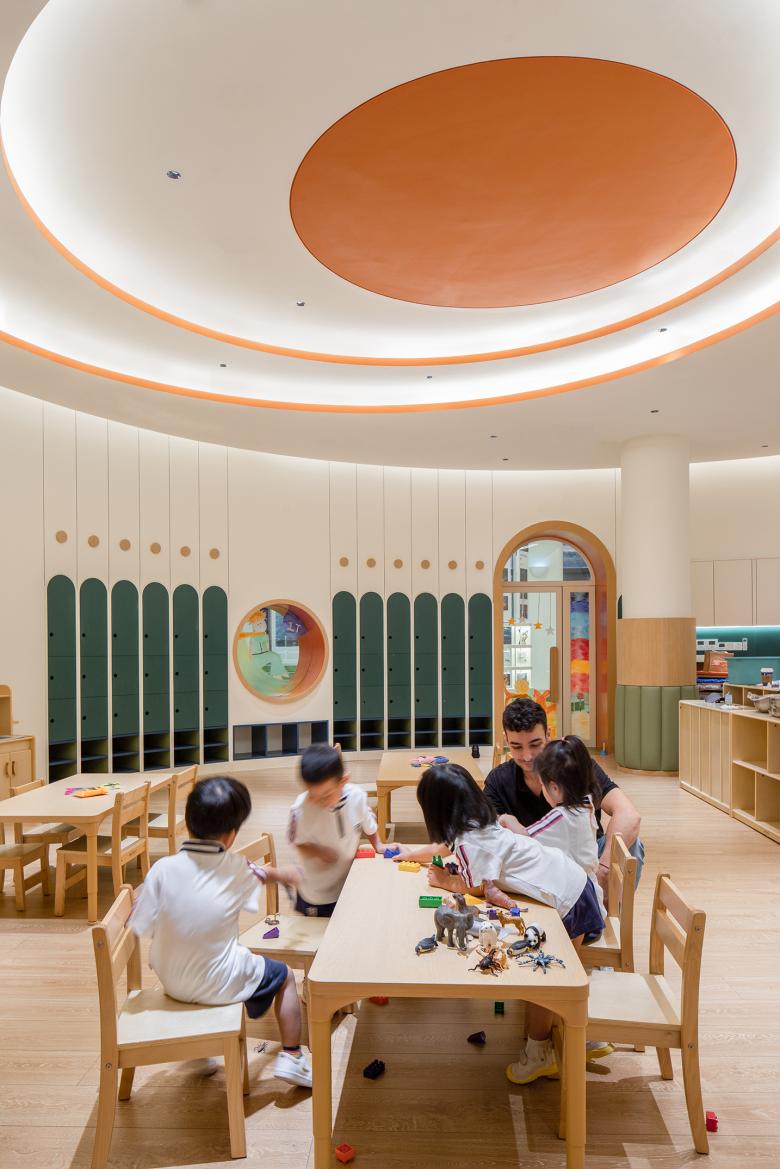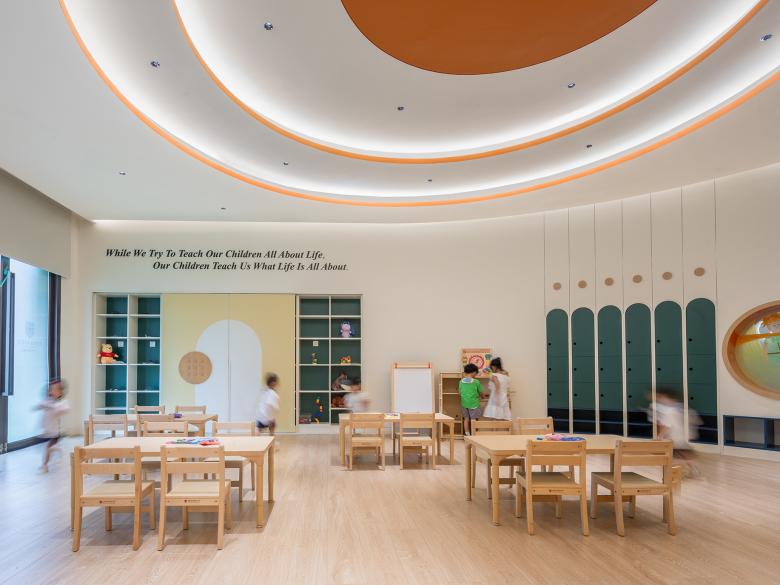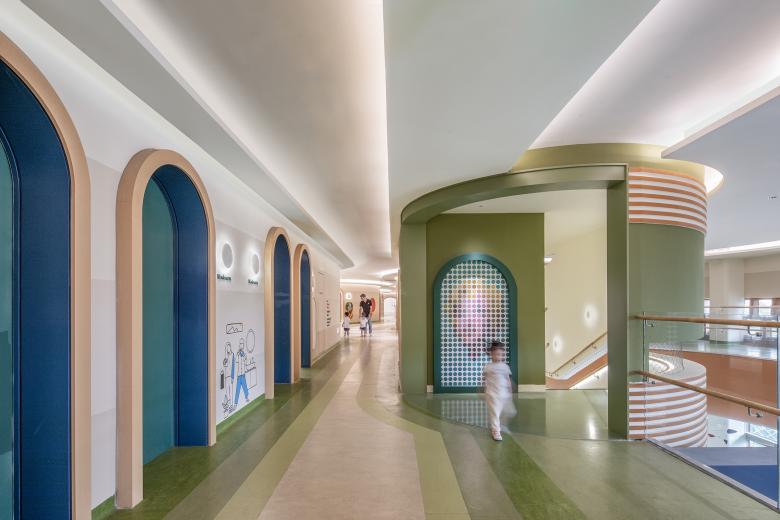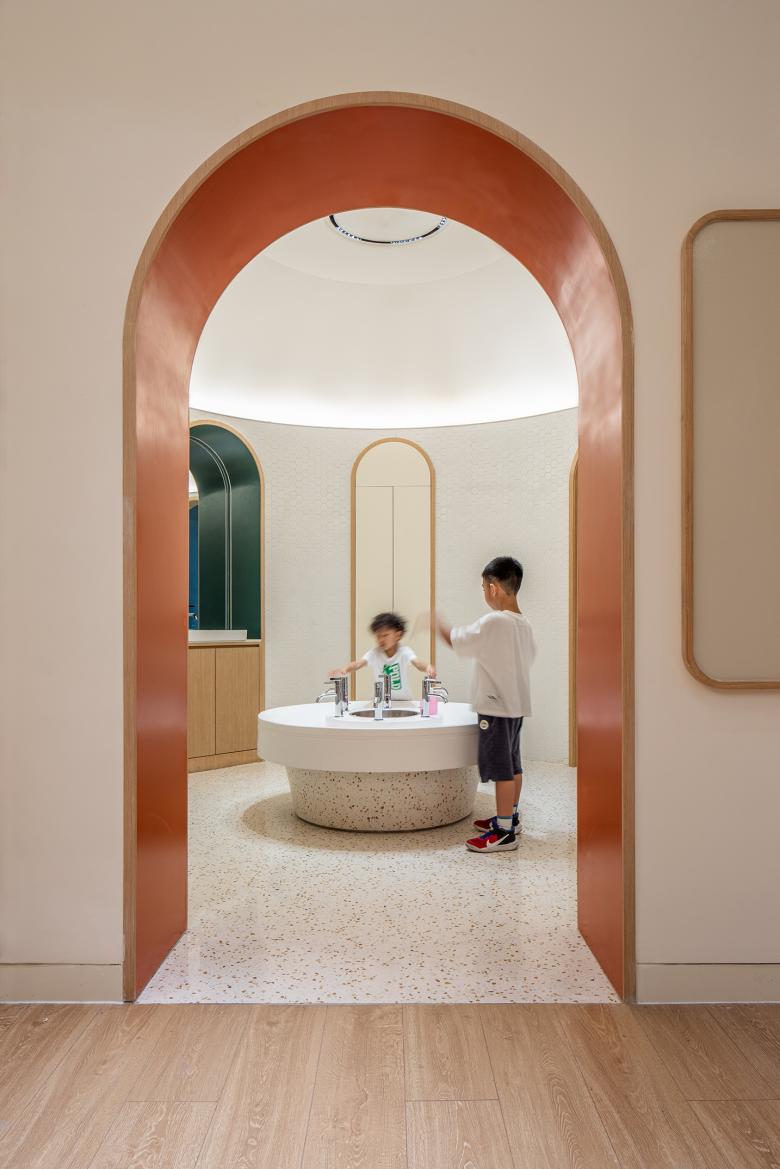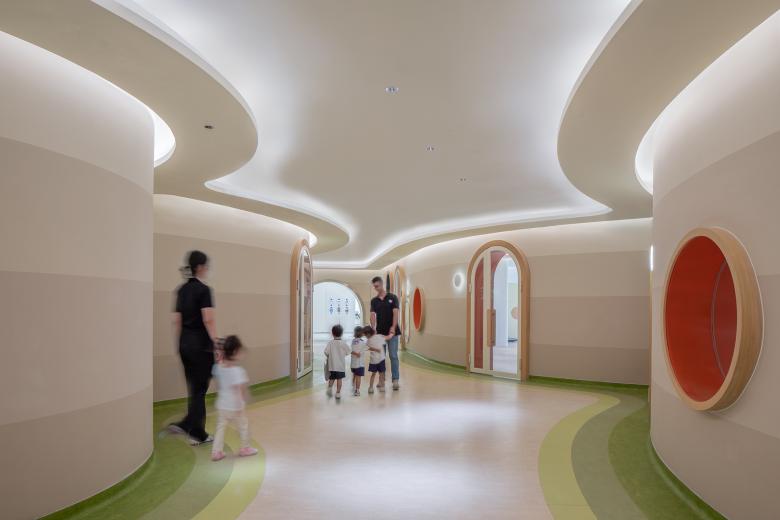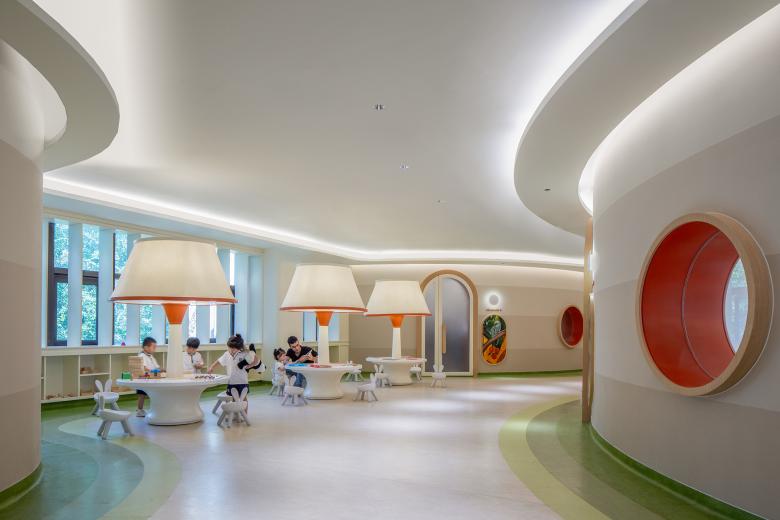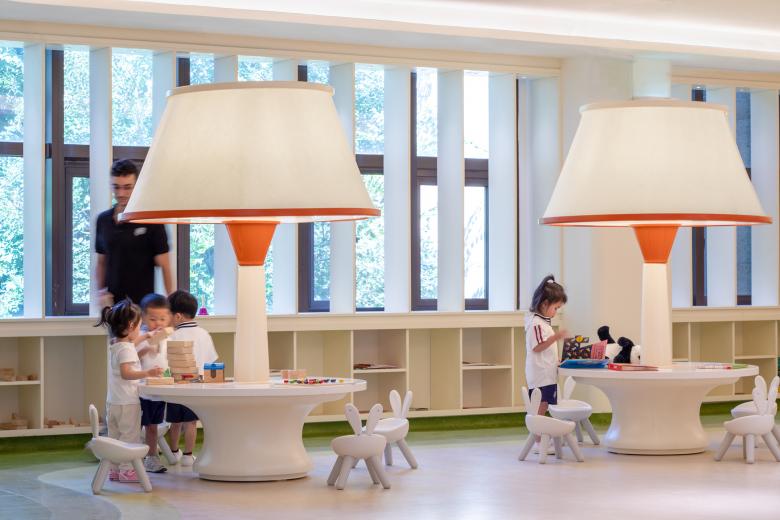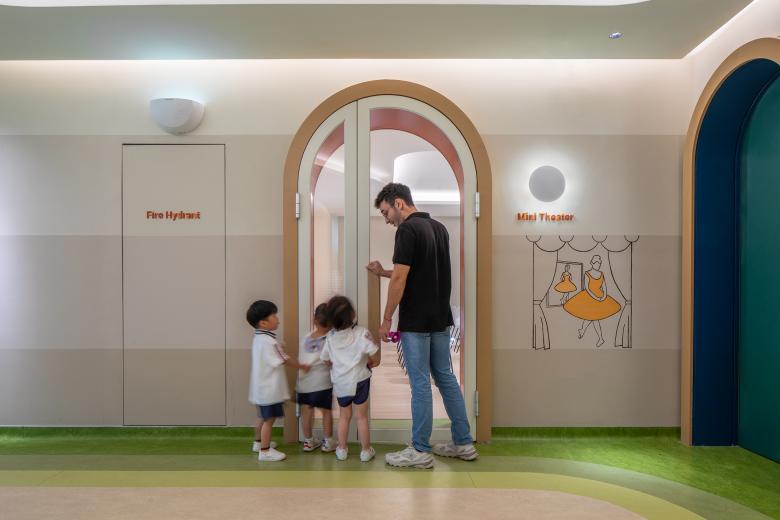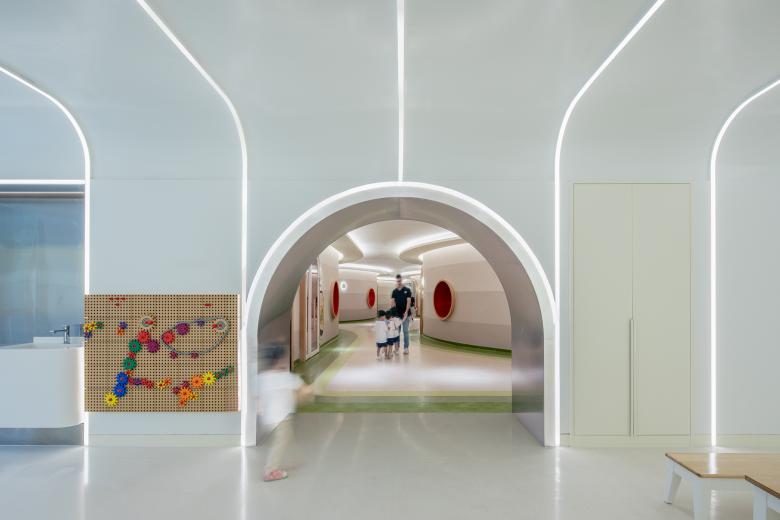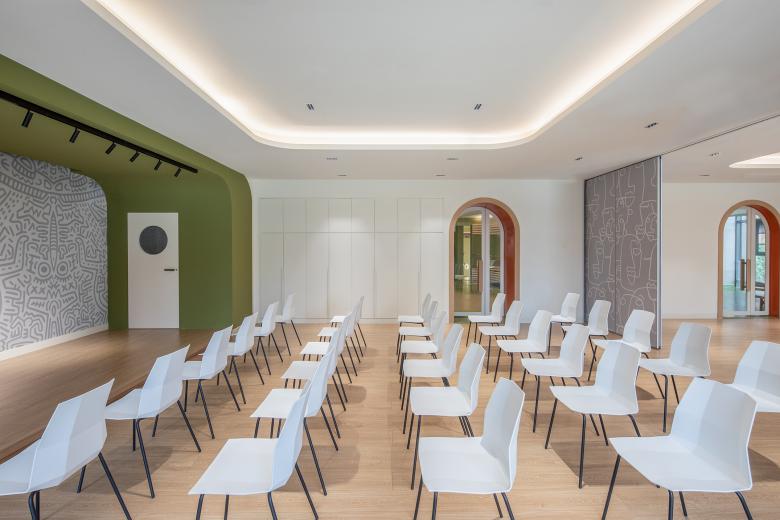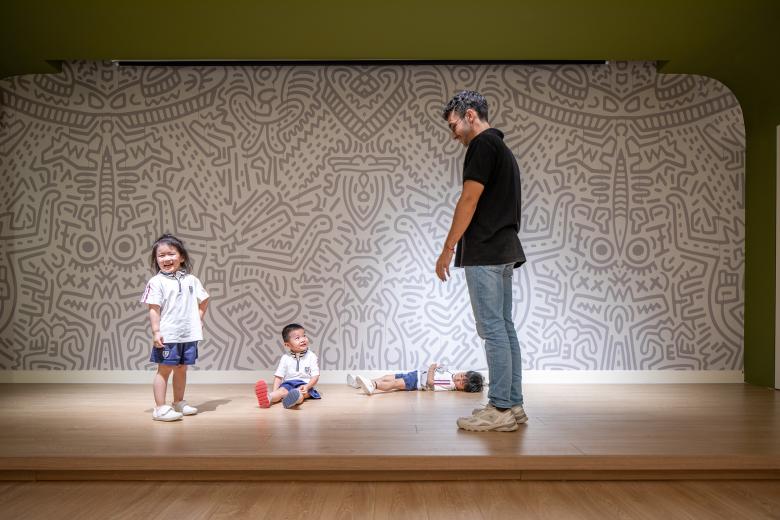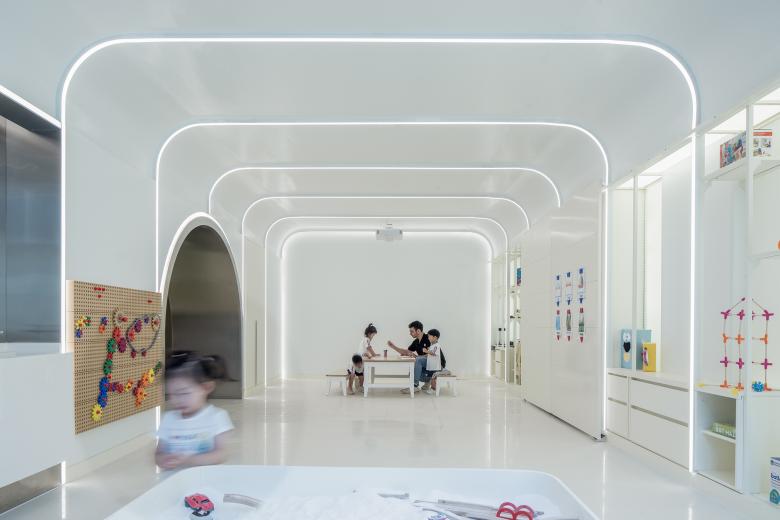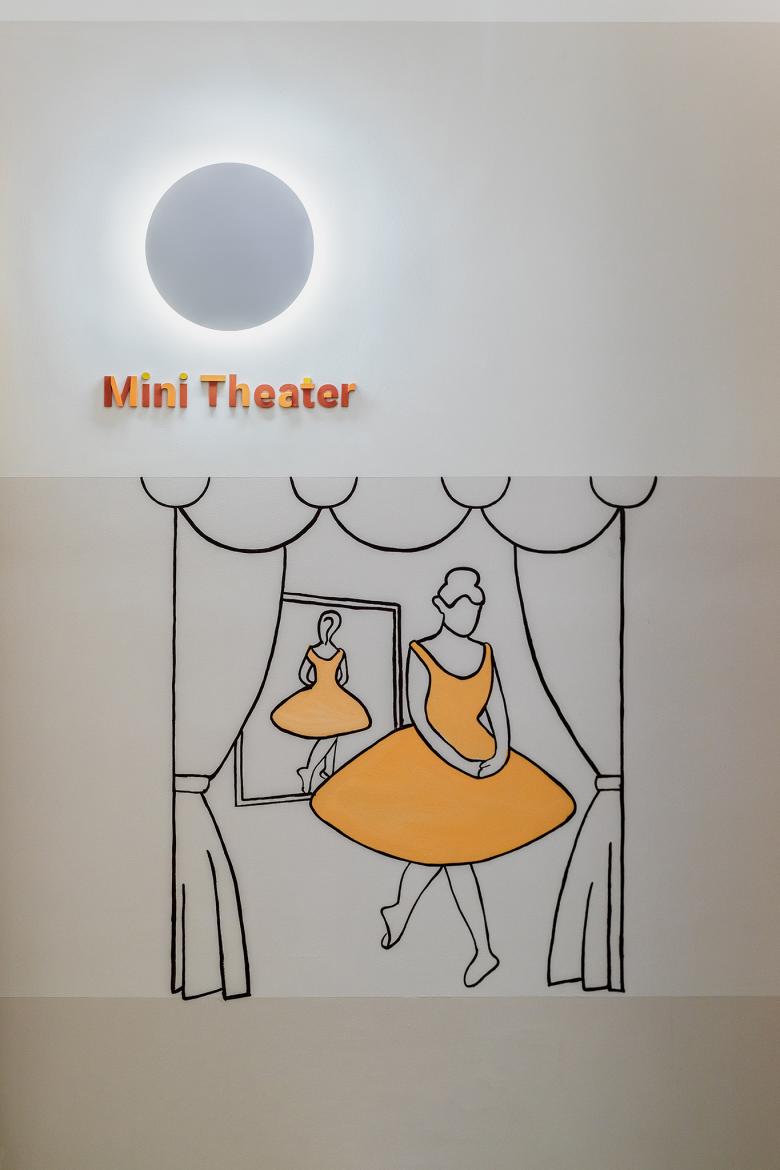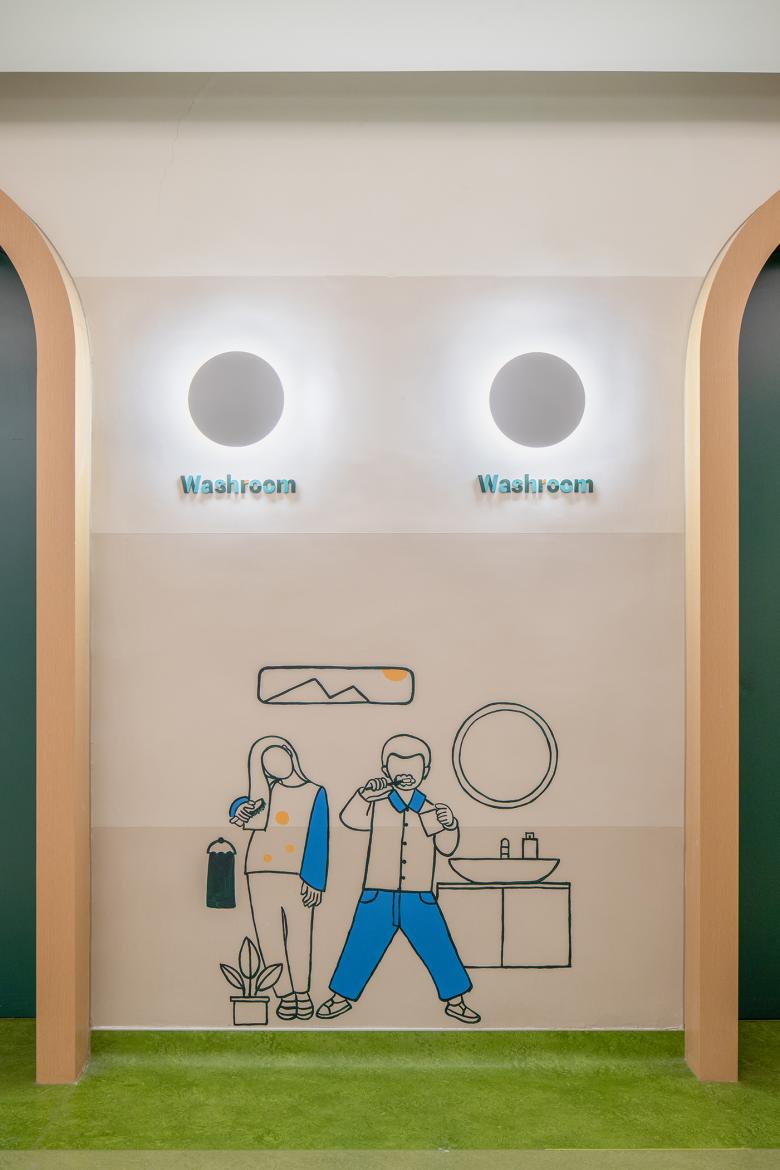Eyaskids Pro
Wuhan
- 建筑师
- KOKAISTUDIOS
- 位置
- Wuhan
- 年份
- 2023
To create a successful art kindergarten – a place where children can learn about and interact with the creative mediums – the kindergarten itself must be a work of art. This was the driving force behind KOKAISTUDIOS’ transformation of a former Wuhan sales office into EYAS Kindergarten, an innovative early-years educational facility built upon values of creativity, community and cohesion.
—————————————————
Kokaistudios' design is child-oriented, creating a natural curiosity and interactive journey for the user. Linear circulation and unitary levels are eschewed in favour of varied volumes and playful points of exploration; corridors are replaced with fluid internal social spaces and interlinking indoor playgrounds; and a punctuation of circular elements encourages communal continuity at every turn.
With the studio’s child-centred approach influencing everything from furnishings and fixtures to signage and storage, the result is not simply a space that facilitates the learning process but seeks to actively improve upon it. Guided by the seven elements of art – line, shape, form, space, texture, value and colour – EYAS Kindergarten features nine standardised classrooms alongside specialised spaces for dance, music, art, cookery and technology, each with unique design and architectural characteristics that work to form a stronger bond between student and subject.
Set within a dense urban plot surrounded by luxury residential towers, initial work involved the optimisation of natural light and a wholesale reconfiguration of the internal structure. The design team reordered the entire interior space to encourage a flow driven by the natural curiosity of children. The result is a completely fluid system of movement, one that is equally interesting to the kids and adults; using these seven principles of arts as a guide, the design team wanted to showcase how these notions can be applied within the space itself.
Colours have been selected not only for their psychological properties – yellow, orange and green all play a role in improving reading and numerical comprehension – but so too their presence in a selection of iconic paintings. Likewise the catalogue of gradients, blockings and textures these shades are used cross, which carries a subtle lesson in technique of its own.
Characterised by its extensive system of rounded, continuous forms, the design scheme combines utility, learning and recreational space across two floors linked by a statement central staircase with incorporated welcome desk and child’s-eye-level viewing strip. Working to simultaneously remove any dangerous sharp edges and encourage children to gather around objects and interact face-to-face, these rounded shapes are present in everything from tables and chairs to reading trees and large-scale lamp-shade tables.
This infusion of art, design and education continues in the Art Lounge, where a gallery of sculptures, paintings and historic art ‘fragments’ are exhibited alongside interactive elements that encourage students to engage with art beyond straightforwards observation. Indeed, the kindergartens’ entire signage system has been designed in a similar vein; simplified typography forms the bulk of the way-finding, though a selection of visual subject representations prompt interpretation and a deeper quality of engagement.
In the revese, characteristics of key artistic movements have been incorporated within elements beyond conventional frames; a De Stijl-inspired clock-face greets students as they enter the building, whilst dance room signage on the second floor mirrors the figures from Degas’ seminal The Dancing Class.
Contained within classrooms are zones for reading, cognition, drama, art and circle time. Curving walls accommodate niche storage solutions for toys, lunches, clothing, whiteboards, televisions and windows. Beyond this, specific facilities like the S.T.E.M workshop and a music room are given aesthetic identities of their own. The former’s focus on educational technology translates as a futuristic curvilinear matrix of screens and white metal frames, whilst the latter features a concealed audio booth alongside a flexible folding door that reveals a performance and stage space. Nonhazardous materials like cork and polycarbonates are specified throughout.
Recreation space is mixed between traditional elements of play and more informal further-learning space. Reading areas and art equipment are interspersed between a ball pit, trampoline, slide and climbing wall, with their circular forms allowing them to stack and reflect the wider multilayered scheme.
The upper floor playground is configured in such a way that the corridor is no longer just a corridor, but a meeting place for the kids, where they can look down on the main staircase and the double height ceiling; it encourages them to go and explore the space and the different mediums of art.
Indeed, the best works of art are those that demonstrate a strong relationship between form and content. The physical shape suitably reflecting and enhancing the substance it contains. In the context of learning about art, this matters even more, and so a space that can resonate emotionally whilst carrying valuable lessons about fundamental artistic concepts is perhaps the surest start for any budding young artist.
Project Info
Project name: EYASKIDS Pro
Location: Wuhan, China
Floor area: 2,500sqm
Date of opening: Jul. 2023
Client: EYAS International Education Group
Service Scope: Interior Design
Chief Designers: Filippo Gabbiani, Andrea Destefanis
Design Team (alphabetically by last name): Qing Chang, Alex Jiang, Federico Nie, Alba Wang, Shiyuan Wang
Photography: RAWVISION studio
Text: Kristofer Thomas
Media contact: Jacqueline Chiang
Email: [email protected]
相关项目
杂志
-
MONOSPINAL
今天
-
Building a Paper Log House
2 day ago
-
Building Bridges with Chris Luebkeman
3 day ago
